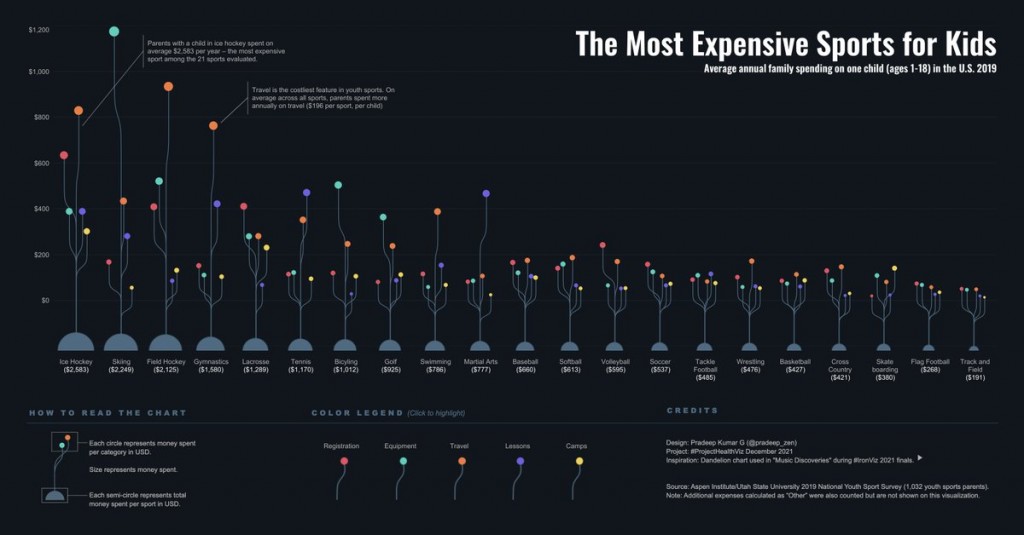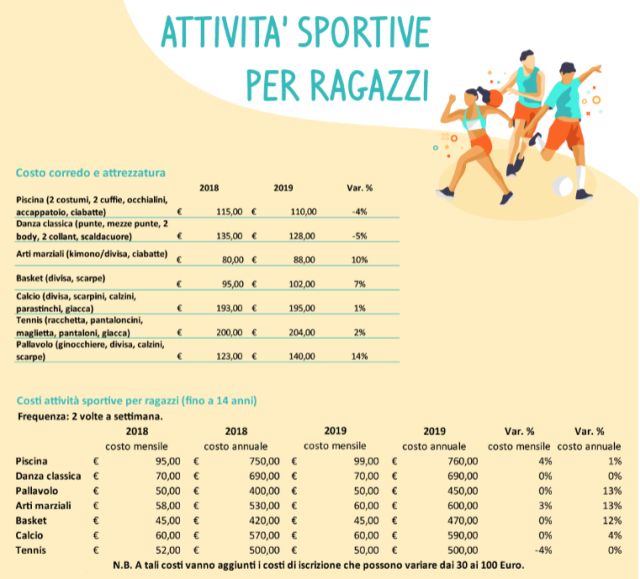Since many years sports have been completely privatized f; it is now rare for young people to play spontaneously on their own in parks and gardens. Sports has become one of the household expenditure items. I am not aware of the costs of sports after the pandemic and whether they have increased/reduced. However, we have data from the immediately preceding years.
This table on a survey conducted in the U.S. shows that the most expensive sports are ice hockey (US$2,583 annually) , skiing US$2,249), field field hockey (US$2,125), gymnastics (US$1,580), lacrosse (US$1289) and tennis (US$1,170). It is striking that golf is between cycling and swimming. Not surprisingly, the cheapest sport is athletics. However, it is likely that costs vary from nation to nation. Also, this survey does not include horseback riding, a particularly expensive sport.
These data are relatively different from those in Italy.
The Federconsumatori National Observatory has monitored the costs of various courses (including swimming, tennis, basketball, soccer): the costs of sports activities for children (up to 14 years of age) as well as the cost of the kit and equipment needed to attend some sports activities (such as uniforms, sneakers, etc.) as shown in the table below. The limitation here again as in the U.S. survey is that it covers the years prior to the pandemic and gives no indication of what kind of adjustment led to the long-term closure of sports centers, or how much we suffered e.g. swimming pools compared to tennis clubs, which were the first to be able to restart.
To these costs must be added registration fees, which, depending on the sports center chosen, can range on average from 30 to 80 euros. “Definitely excessive costs that, in addition to weighing on Italians’ expenses, can push them toward not practicing sports activities, which are fundamental for the health and education of children,” – argues Emilio Viafora, President of Federconsumatori.
In fact, swimming courses, warmly recommended by all doctors, especially with regard to the growth and development of children and young people, have touched rather high costs, definitely excessive if one considers in the household the presence of several children. The cost of a swimming course turns out to be 720 euros annually, to which must be added 115 euros for equipment and about 55 euros for registration, for a total of 890 euros. Even more expensive is the choice to practice ballet, with a cost of 690 euros per year, to which 140 euros must be added for equipment, 110 euros for the end-of-year recital and about 55 euros for registration, for a total of 995 euros per year.
By contrast, the cheapest sport turns out to be basketball, which costs 508 euros annually, including 420 euros for the course, 83 euros for equipment and about 55 euros for registration. To meet these costs, several families are forced to take out loans from financial institutions, generally finding themselves having to repay the entire capital required in 12 months.







